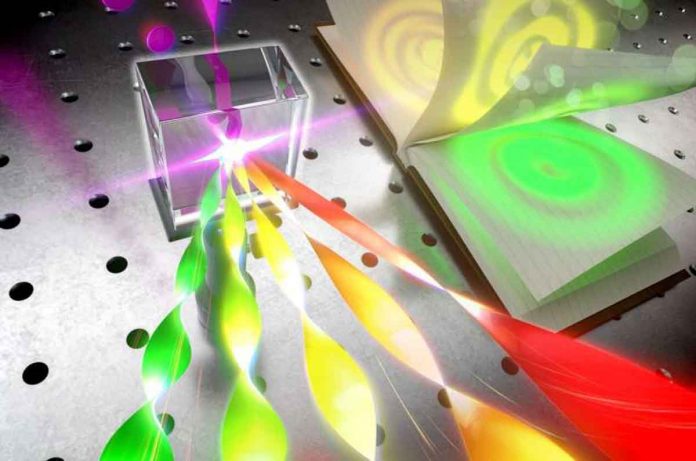Light, like cloth, can be tailored by weaving and stitching a pattern into the fabric of light itself. This structured light enables us to access, harness, and exploit all of light’s degrees of freedom, allowing us to see smaller in imaging, focus tighter in microscopy, and pack more information into light for classical and quantum communications. The authors highlight recent advances in replacing the traditional linear optical toolkit with nonlinear control in their study published in Opto-Electronic Advances.
Nonlinear optics has traditionally been associated with wavelength control, but the authors show that the landscape is far more colourful than just the colour of the light, affecting all degrees of freedom in sometimes unexpected ways. The advanced toolkit promises new applications ranging from classical to quantum, ushering in a new era of structured light.
The authors of this article review recent advances in the use of nonlinear optics as a new tool for the creation, control, and detection of structured light, providing new insights and perspectives on this emerging topic. Structured light attempts to exploit light’s many degrees of freedom in order to impart “structure” to the light. This could be in terms of amplitude, phase, polarisation, or more exotic degrees of freedom like path, orbital angular momentum, or even spatiotemporal control. To date, most of this has been accomplished using a linear optical toolkit, with nonlinear optics used to change the colour of the light (its wavelength and frequency). The emphasis has been on light efficiency.
Today, the emphasis is on the appearance of light, or the structure of light. The authors show how structured light with nonlinear optics can outperform the linear toolkit by combining degrees of freedom in novel ways, changing selection rules, and producing sometimes surprising results. To diffract light in a linear system, for example, a physical object with some obscuration, such as a pin hole or slits, is required. However, in the nonlinear regime, one structure of light may appear to be the amplitude object diffracting another, resulting in new propagation dynamics of structured fields.
Excitingly, in nonlinear optics, the product of fields rather than their sum can produce new forms of structured light. Light quantum control can be improved by replacing the ubiquitous linear beam splitter with nonlinear crystals, which have been shown to improve imaging and provide a new path to high-dimensional teleportation. Interestingly, the light-matter interaction in nonlinear optics means that advanced structured matter, such as metasurfaces and metamaterials, can be used to customise structured light, providing unparalleled nonlinear efficiency.
The authors are the first to unpack the physics of nonlinear optics in the context of structured light, and they provide a comprehensive overview of the subject from fundamentals to applications. They offer new insights and perspectives based on their extensive experience in structured light, revealing how this new field is rapidly advancing and speculating on what the future may hold as current challenges are transformed into exciting applications.

